In our latest article, we took you along with us on one of our most beautiful treks around the world: the Quilotoa Loop, where volcanoes, canyons, llamas, and a splendid lagoon awaited us. Less than 6 hours by bus later, we find ourselves immersed in a completely different environment: the Ecuadorian Amazon rainforest! This time, the menu includes waterfalls, lush jungle, and all sorts of little creatures… Are you coming?
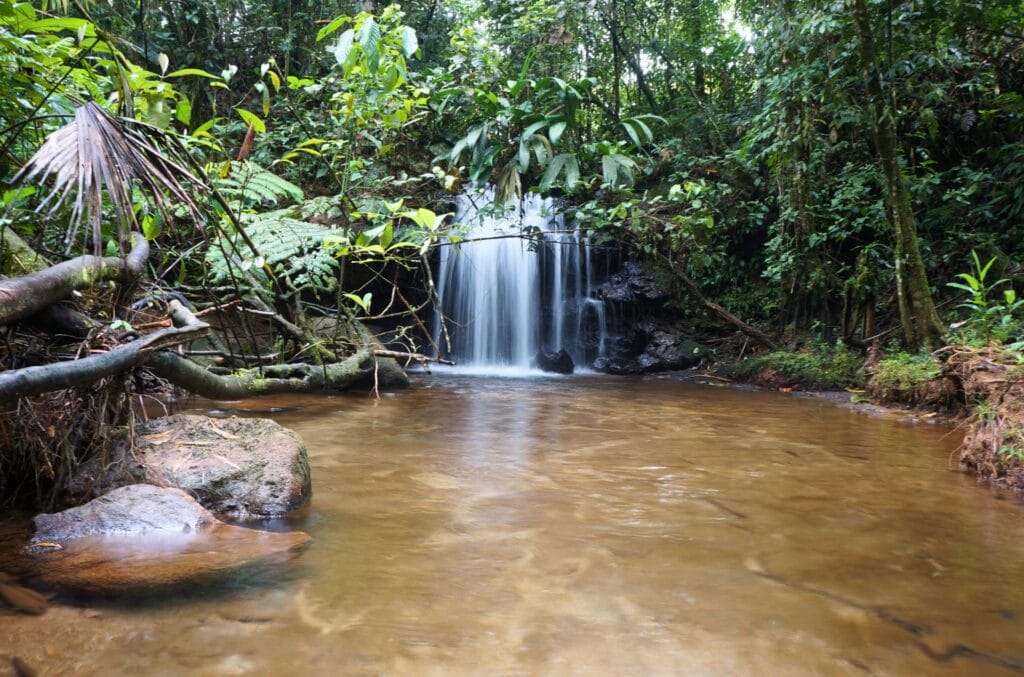
We took this trip in 2014, but the article was completely revised and updated in December 2023. If you see any price changes or have additional information that might be relevant, please feel free to leave us a comment!
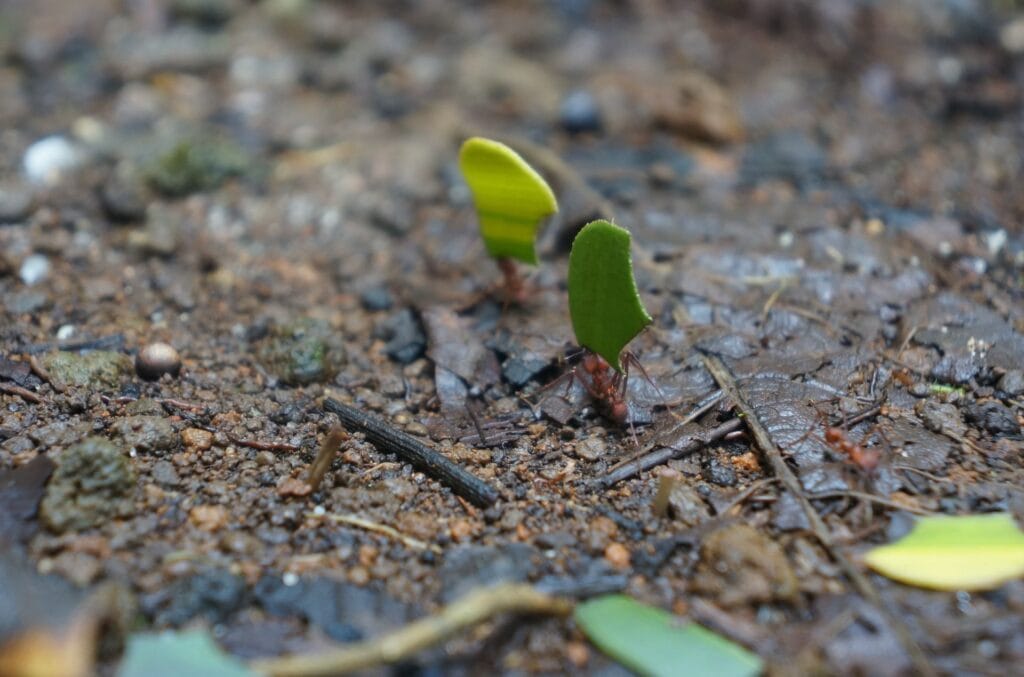
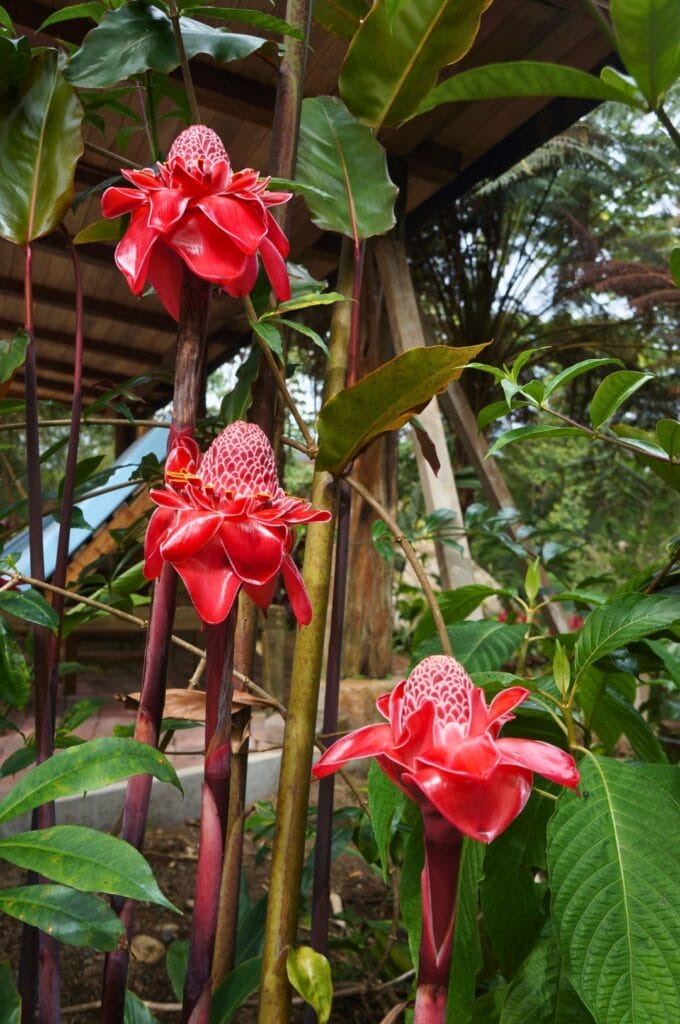
Introduction to the Amazon rainforest in Ecuador
No need to remind you what the Amazon is, this vast green lung of the planet that revolves around the Amazon River and covers 6.7 million km2 (5.5 million of which are composed of the Amazon rainforest)! To visit the Amazon, you have choices as it spans 9 countries: Brazil, Bolivia, Colombia, Ecuador, Guyana, French Guiana, Peru, Suriname, and Venezuela. In other words, a classic in many South American trips!
What attracts in this area, which must be protected at all costs, is the tropical jungle, an unknown environment for many. Lush vegetation implies unique biodiversity. Here, you can find thousands of plant and fish species, hundreds of reptile species, and thousands of other wild animals (jaguars, otters, [Amazon] pink river dolphins, monkeys, etc.). Moreover, it is the habitat of several indigenous peoples: Kichwa, Achuar, Siona, Secoya…
For Ecuador, the Amazon rainforest still covers 42% of its surface! It’s hard to miss… However, most travelers often pass through Bolivia or Peru to visit the Amazon. So, we decided not to follow the crowd and set out to explore this vast rainforest during our Ecuadorian journey, but with less heat and mosquitoes! Yes, it’s possible!
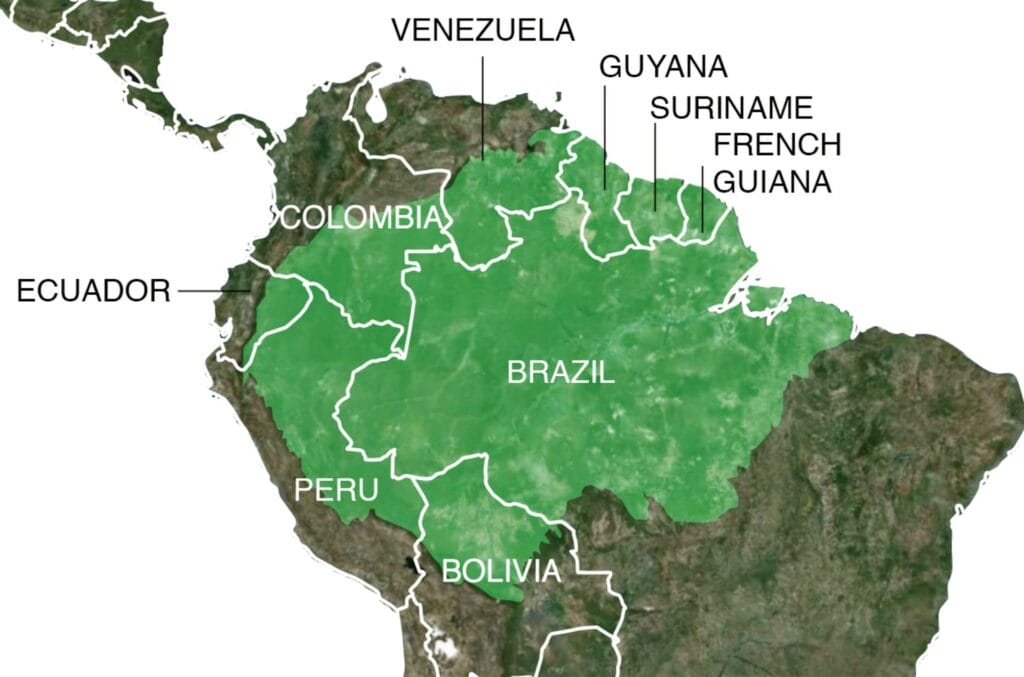
Other attractions of the Ecuadorian Amazon
Guayusa, the golden goose
Currently, the Amazon region of Ecuador is experiencing an economic boom, mainly due to the increasing interest in guayusa.
What’s that? Guayusa is a plant that only grows in the Amazonian part of Ecuador. It is used in the form of leaves, like tea, and contains a significant amount of caffeine and antioxidants (2 times more than green tea, to be precise!). To delve deeper, National Geographic has published an article on this typical Amazonian plant.
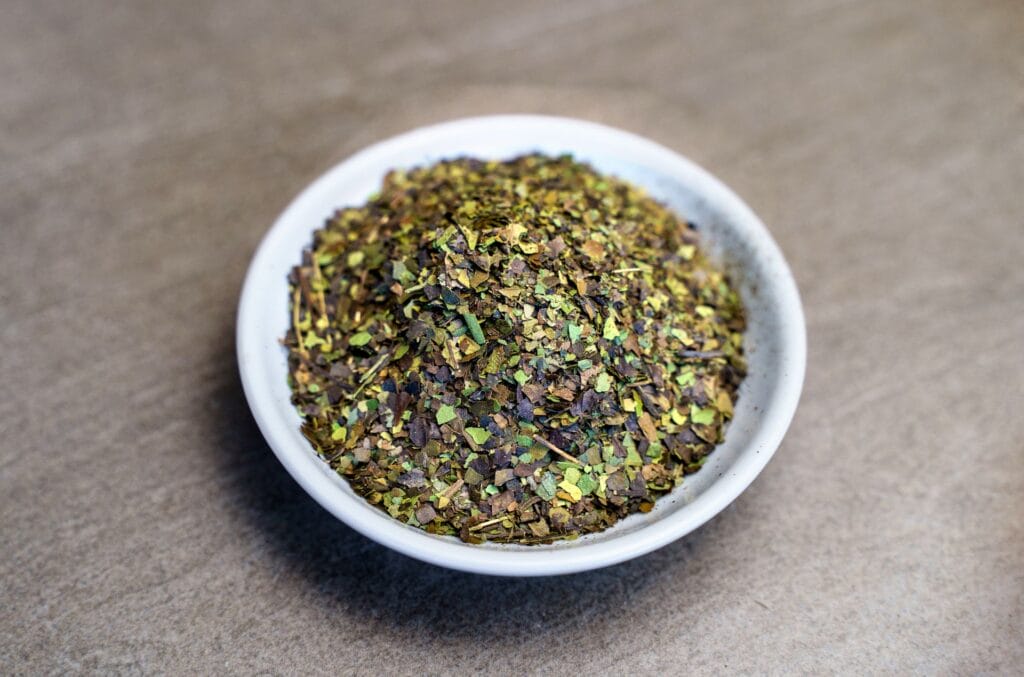
Having drunk it every morning during our visit, we can confirm that it’s really excellent! It has a slightly bitter taste, but easily masked by adding a little lime and sugar to the mix!
Oil production in Ecuador
But don’t think that people in the Amazon solely depend on tourism and tea production! The Coca region is one of the main sources of oil in Ecuador, and for many years, oil exploitation has been a significant part of the country’s economy!
While its ecological impacts are highly debatable, the advantage (and the only one?) is that Ecuadorian gasoline is among the cheapest in the world! On average, a liter costs $0.63. Admit that it’s not bad, right? Consequently, bus transportation in Ecuador is also among the cheapest in all of South America. Expect to pay 1-2 dollars per hour of bus travel!
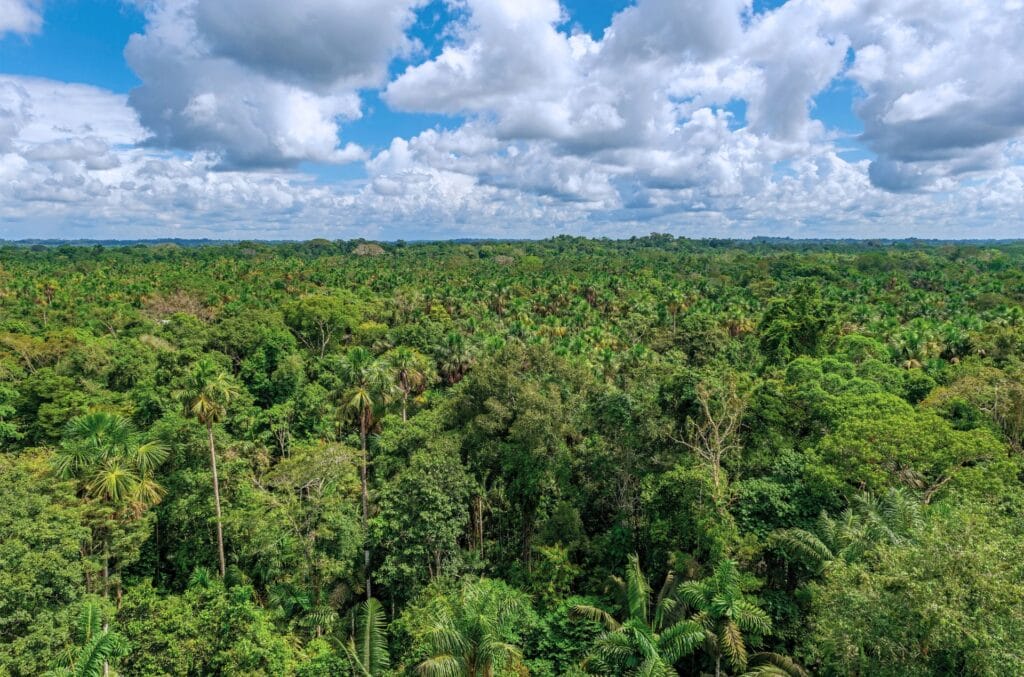
How to visit the Amazon in Ecuador
Primary and secondary forests
In Ecuador, the Amazon rainforest occupies almost the entire eastern part of the country. That’s why it’s also called the Oriente. It is known to be proportionally richer in diversity in terms of fauna and flora compared to its Brazilian Amazon neighbor! If you want to visit the Amazon in Ecuador, you roughly have 2 region options for 2 types of forests.
A brief sylvan aside: the primary forest, also known as old-growth forest, is a forest composed of indigenous species that have never undergone modifications by human activity. The secondary forest, on the other hand, is more recent as it has been destroyed by humans before regenerating. Thus, you will see more typical animals in the primary Amazon, but it’s a bit more complicated to access.
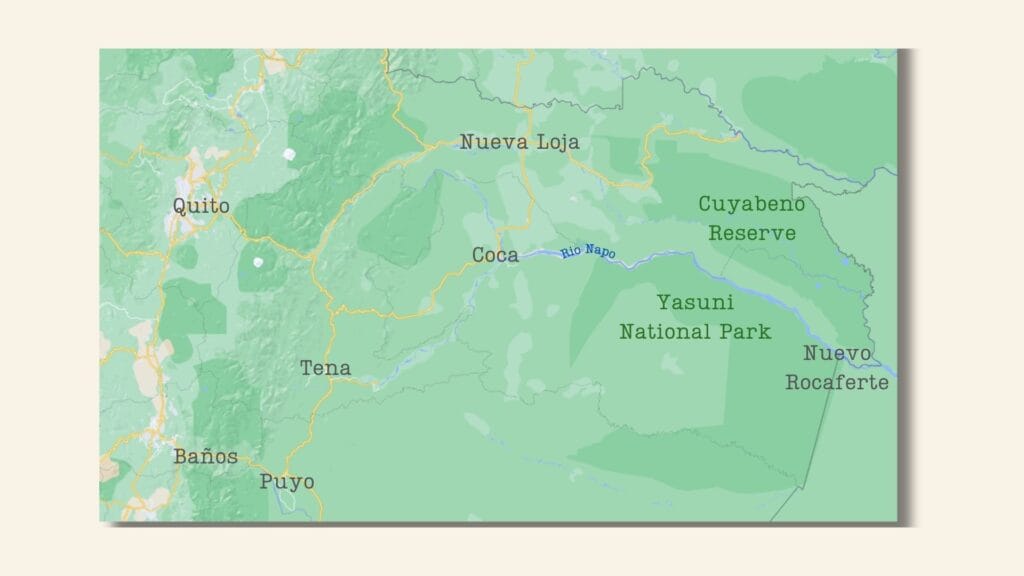
To the north, starting from Coca (Puerto Francisco de Orellana in its original name) and Nueva Loja, this is the lower part of the Ecuadorian Amazon. There are numerous opportunities to discover the Amazon and its secondary forest through lodges located along the Napo River. Coca is also the starting point for exploring the primary forest in Yasuni National Park and the Cuyabeno Wildlife Reserve. These two protected areas are among the largest biosphere reserves in the world! For information, you will find more accommodations in the more frequented reserve, unlike the national park, which is more exclusive. As a result, prices also reflect this…
Further south, starting from Puyo, Tena, and even Baños, in the secondary forest, this is the upper part of the Amazon basin, where the climate is much milder. Located at 600 meters above sea level, Tena and Puyo enjoy warm daytime weather but cool nights. And no mosquitoes! So, we chose this area, and even though it’s the secondary Amazon, we were amazed throughout our stay!
Lodges to explore the Amazon
Note that you cannot visit the Amazon rainforest on your own; you must be accompanied by a guide. For the primary forest, you must go through one of the many lodges that offer all-inclusive 3 or 4-day packages. For the secondary forest, you have the same format of visit or 1-day tours from Quito. Since there are many lodges, we have selected for you those that have been tested by readers or offer reasonably priced tours. (Some overcharge a bit by offering packs at over $1000 per person!)
In the Cuyabeno Reserve
Guacamayo Ecolodge and Canangueno Lodge Cuyabeno: these 2 establishments have simple rooms with private bathrooms. Their advantage is the price of their various all-inclusive tours, a little cheaper than their competitors!
Caiman Lodge: located on the edge of Laguna Grande, this lodge offers packages between 3 and 5 days to experience the Amazon adventure as it should be!
Nicky Amazon Lodge: this charming lodge offers an all-inclusive package: breakfast, lunch, and dinner as well as all possible activities for a total immersion in the Amazon rainforest. The staff will take care of you to make your stay in the Amazon unforgettable!
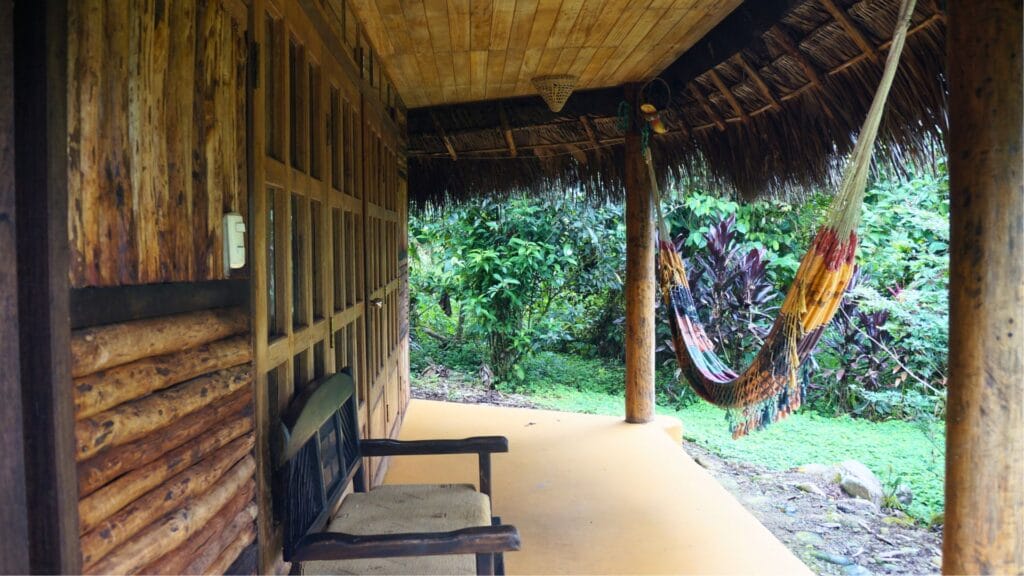
In Yasuni National Park
A name comes up very often: Fernando Sifuentes, THE guide of Yasuni, based in Nuevo Rocafuerte, just on the Peruvian border. It’s simple; he knows the park like the back of his hand and will make you live an extraordinary experience. Therefore, we recommend him rather than lodges that are much more expensive for this service on the Rio Napo side.
To contact him, here is his phone number +593 98 051 9789 and his email address sifuentes.fede@gmail.com. To get to Nuevo Rocafuerte, there is only one way, the boat from Coca! There are 2 types, a classic one that takes 8-10 hours (about ten dollars) and a fast one that takes 4-5 hours (30-40 dollars).
In the primary and secondary forests, around Tena and Puyo
Hasquila Amazon Lodge in Cotundo: this is the lodge we chose! We detail our stay in the rest of the article.
Grand Selva Lodge: this establishment offers a 3-day and 2-night tour with canoeing, discovery of indigenous culture, and hiking in the Ecuadorian jungle…
Hostal Tena Ñaui and Cabañas Germany: located in Tena and Puyo respectively, these two accommodations are situated in a beautiful haven of peace for a perfect stay at a reasonable price.
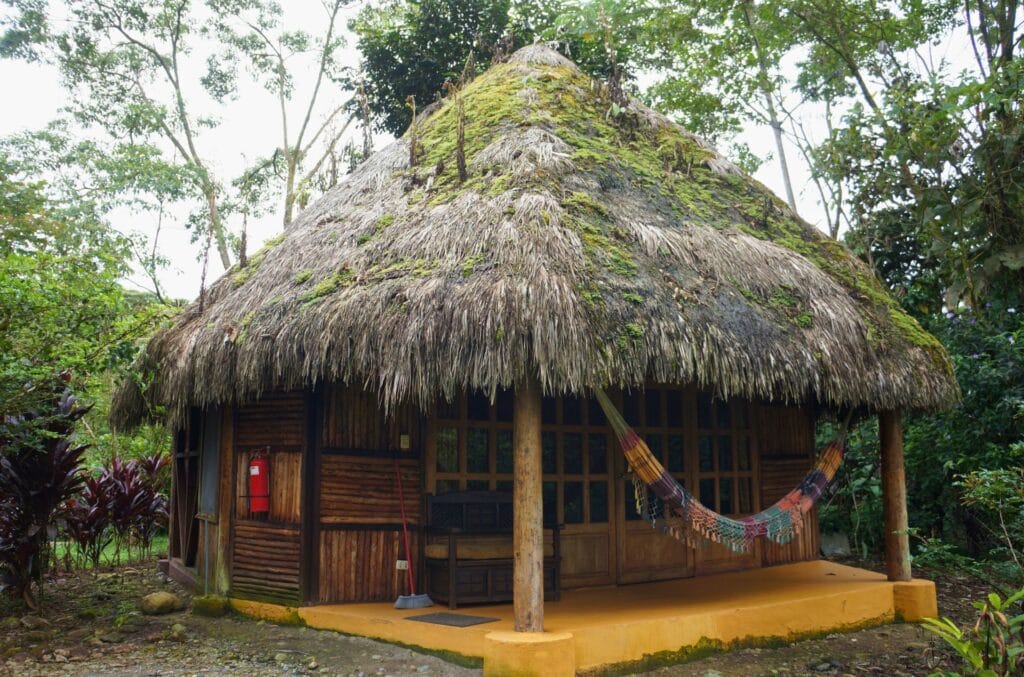
This article contains affiliate links to partner sites. When you use our links to book accommodation, a car, or an activity, you don’t pay anything extra, but we get a small commission. This helps us to offer you free, independent, and ad-free content. Thank you for your support!
Getting to the Ecuadorian Amazon
Getting to the Amazon is sometimes a bit of a challenge… Taking a plane is expensive, and by boat, the journey takes several days. In short, options are not infinite! The advantage of the Ecuadorian Amazon is that it is easily accessible by bus, thanks in particular to the routes between Quito and Coca, Quito, and Tena, as well as from the south coming from Baños.
From Quito
Quito-Coca: the fastest journey takes 40 minutes by a small plane for a round-trip ticket costing about $200. We admit it, it’s better to take the bus! Check the schedules for a 6-hour bus trip from Quitumbe terminal for a ticket between $10 and $15, one way.
Quito-Nueva Loja (Lago Agrio): take the bus from Quitumbe station in Quito to Nueva Loja, 50 km from Coca. The journey takes 8 hours for a price of around $30 round trip. Check the schedules here.
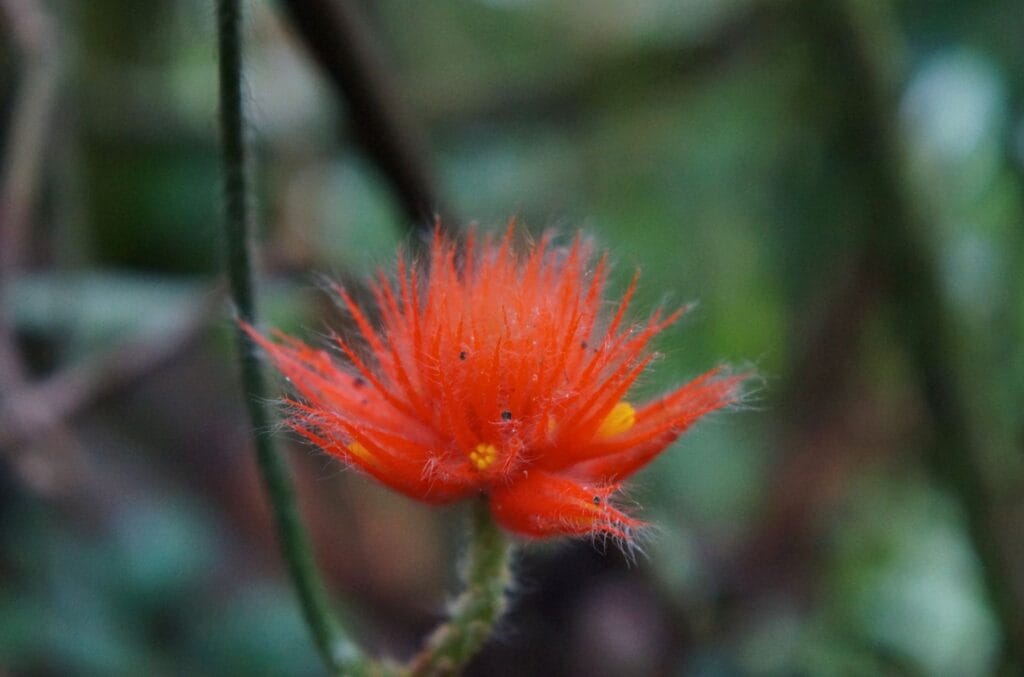
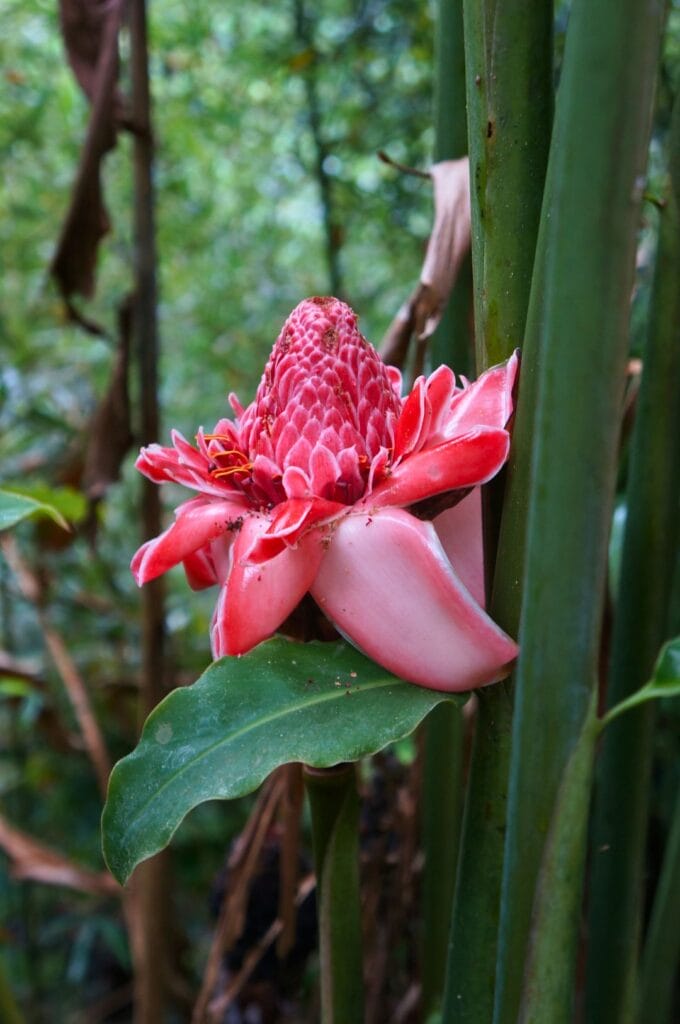
Quito-Tena (and Cotundo): still from Quitumbe, many buses depart throughout the day. The journey takes 4-5 hours for a bus ticket around $8. To go to Cotundo, north of Tena, ask your bus driver to drop you off in the village, about half an hour before Tena. Once in Cotundo, pickup trucks serve as taxis for about $4. It’s the easiest means of transportation to cover the few kilometers that still separate you from the lodge if you have luggage.
Quito-Puyo (Tena): to get to Puyo, it is faster to first go through Baños from Quito. Once in Baños, buses regularly depart for Puyo, taking the waterfall route for $3-4 each and a 1-hour journey. Note that minibusses often travel between Puyo and Tena.
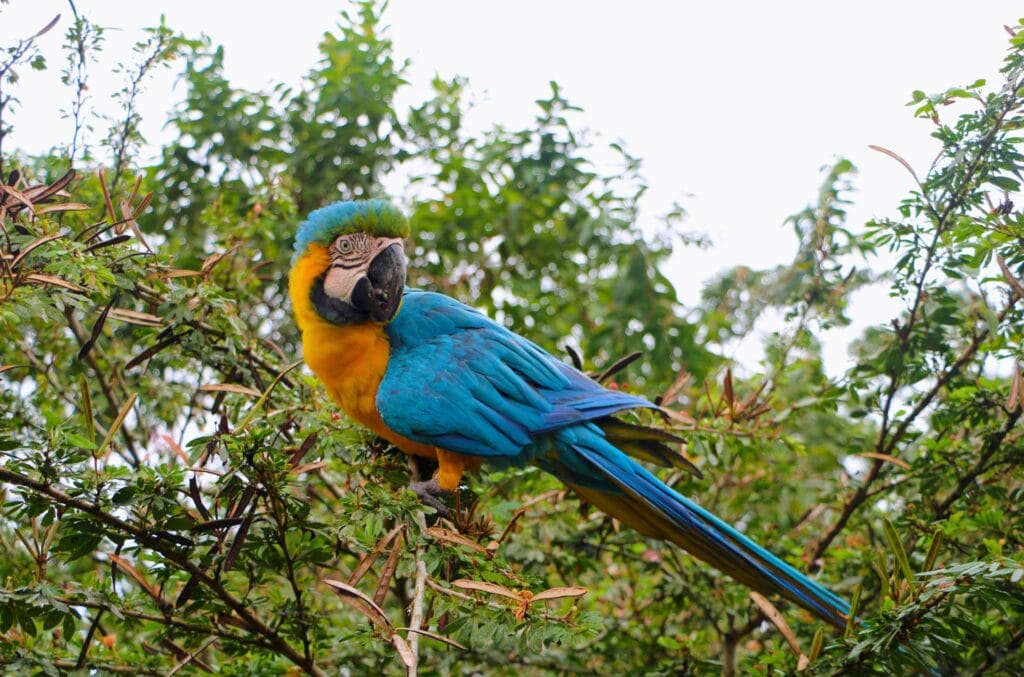
From Baños
Baños-Coca: you can make the direct journey from Baños (about 8 hours), the bus will inevitably pass through Tena.
Baños-Nueva Loja: there may be direct buses, but with little information, buses often stop in Quito. So, it might be better to go directly to Quito or Coca and take a bus to Nueva Loja.
Baños-Puyo (Tena): buses are very frequent for the 1-hour journey to Puyo ($3-4/person). From there, take one of the minibusses shuttling to Tena. To get to Cotundo, take any bus from Tena to Coca or Quito and ask the driver to drop you off in the village 30 minutes away.
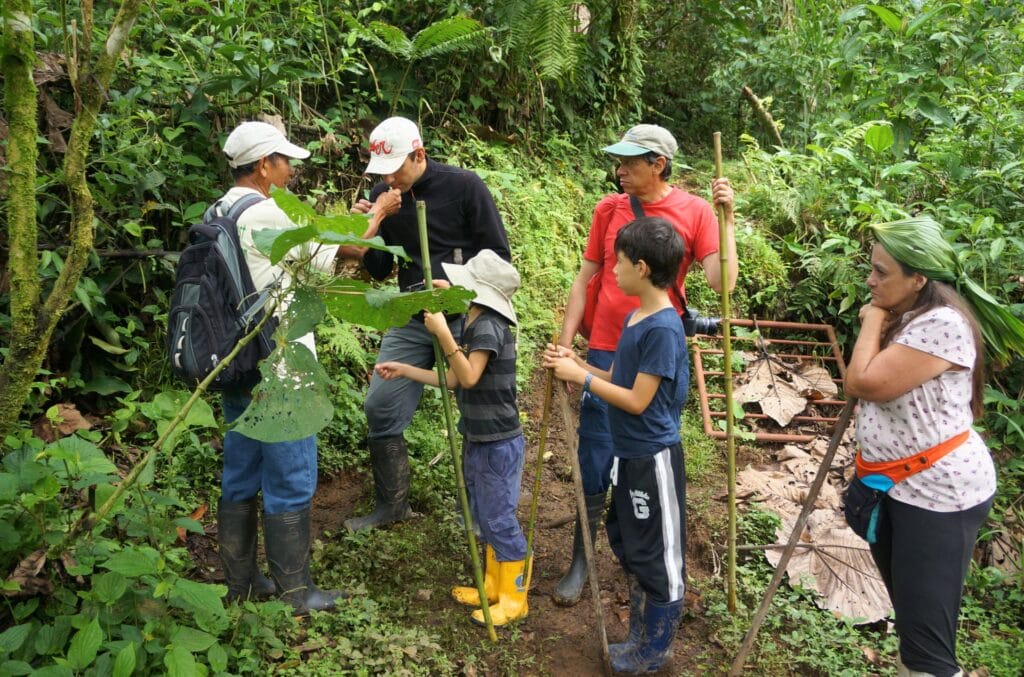
Welcome to the Huasquila Amazon Lodge
It’s in Huasquila, 3 kilometers from the village of Cotundo, north of Tena, that we decided to set down our backpacks for a few days. The Huasquila Amazon Lodge is a complex of 20 bungalows run by an Ecuadorian family and located in a private reserve:
- the bungalows are built only with natural materials from the region;
- this lodge is 100% adapted for people with reduced mobility, with 3 bungalows specially designed to accommodate wheelchair users;
- the cuisine is divine;
- the teams of volunteers, chefs, and waiters are absolutely adorable, and we spent great evenings with them;
- all of this, obviously, in a dream environment!
But Huasquila is not just a lodge; it is also a vast reforestation project on the property. All this would not have been possible without the help of all the volunteers from around the world. The reforestation area has increased from 20 to 170 hectares, and it is precisely in this magnificent reserve that Huasquila organizes its treks.
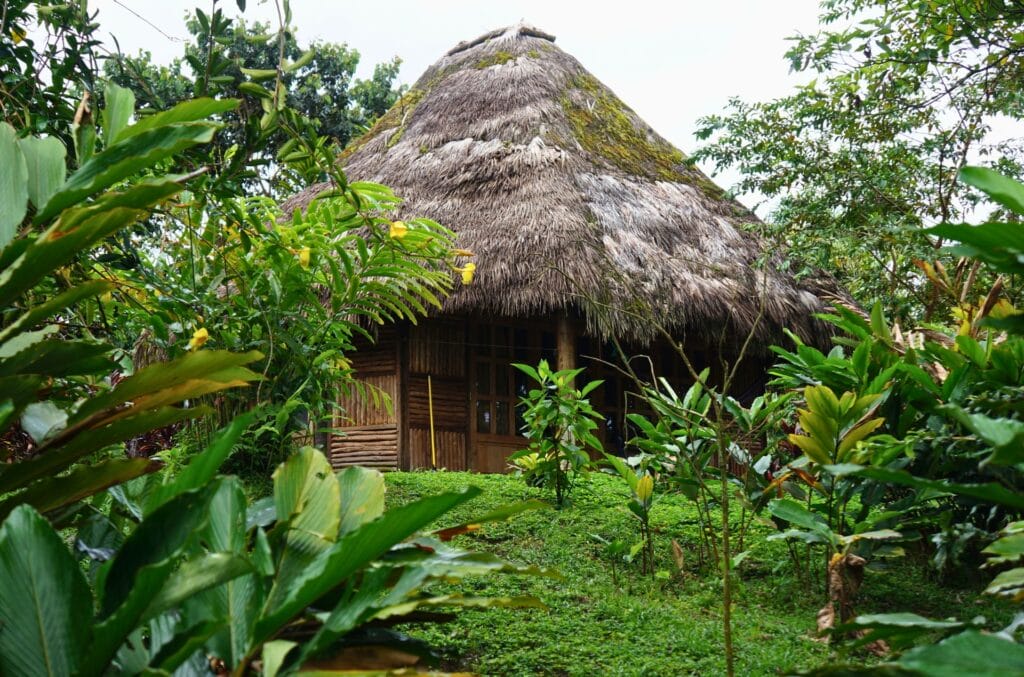
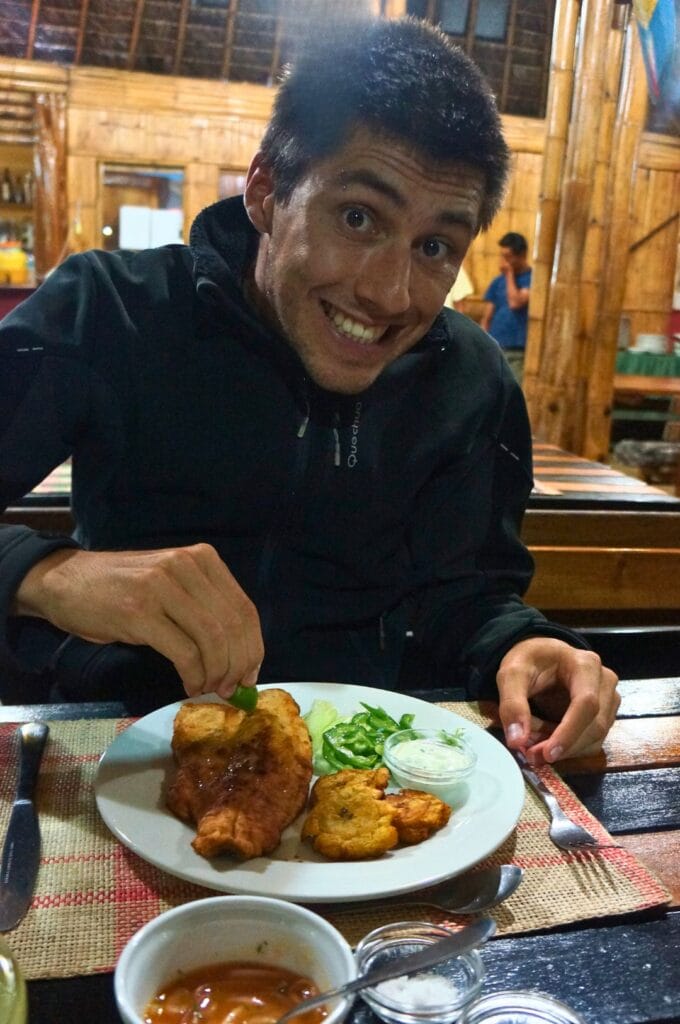
Trek in the Jungle, Waterfalls, and Caves
On the second day of our stay in the Amazon rainforest, we put on our rubber boots (provided by the lodge) and set out to explore the jungle surrounding the lodge more closely! We spent this 4-hour walk in the company of José, a local guide from the neighboring community who has been guiding visitors through the rainforest for years!
This man in his fifties always wears a wide smile. He knows every plant and its medicinal virtues like the back of his hand! On the menu for the day? Discovery of these plants, but also the different areas of the Amazon jungle. With undisguised pride, José presents us with the sections of the Ecuadorian forest, in which he and volunteers have worked tirelessly in recent years to develop reforestation in the region!
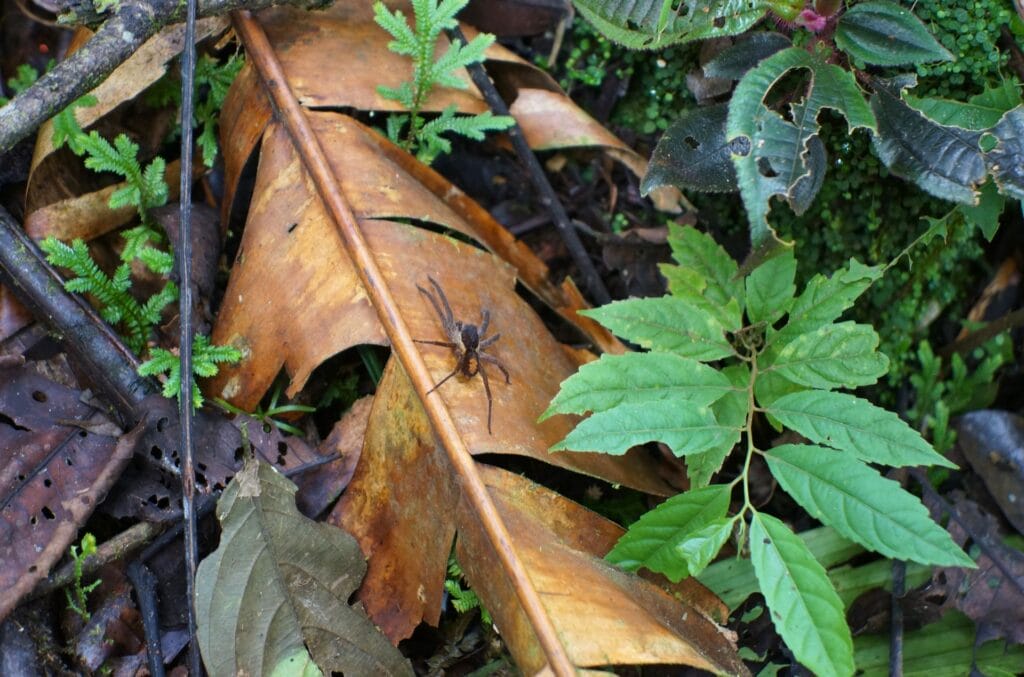
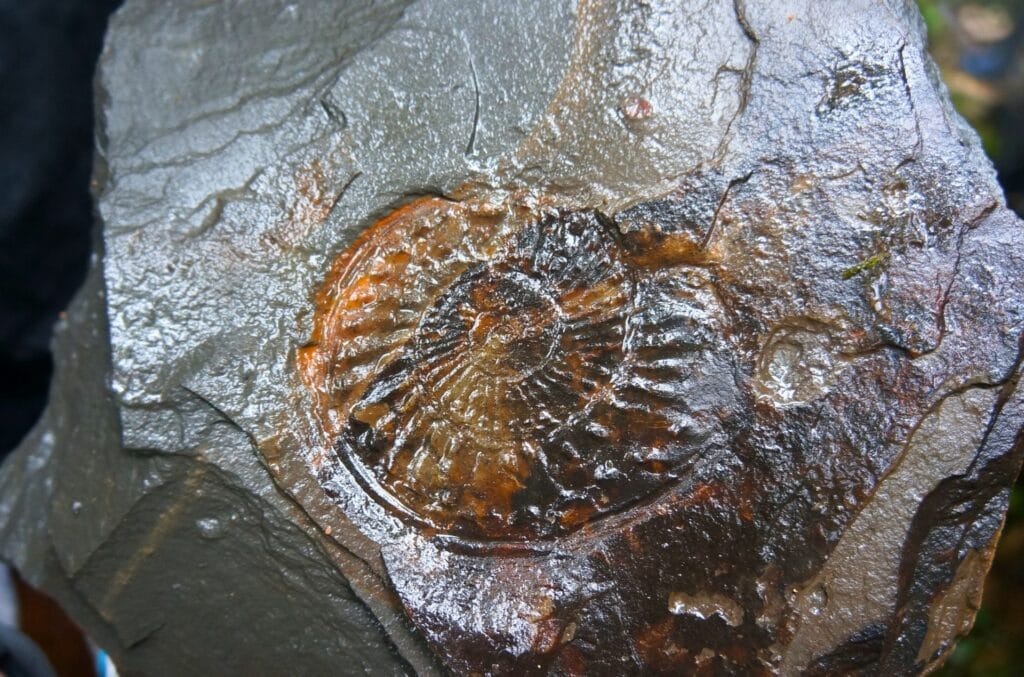
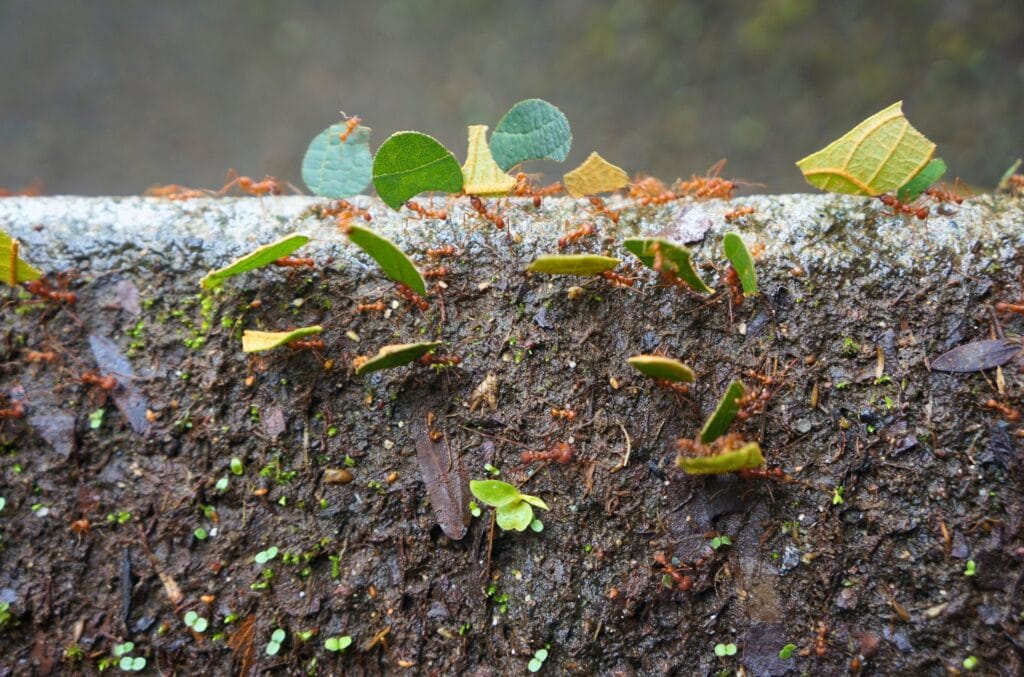
Along the way, we come across absolutely gigantic trees, but something is wrong. How to say… It’s like a part of the root is missing!
Chicha, ancestral Ecuadorian drink
José explained to us that the indigenous communities in the region used this tree to make large work surfaces on which meals are then prepared. In the afternoon, we actually went to visit José’s community. There, we found the missing piece of the puzzle! In this kind of work surface, the women were busy preparing the famous chicha, this typical Ecuadorian drink, like guayusa. But unlike the latter, it is mainly composed of quinoa that has been left to ferment overnight.
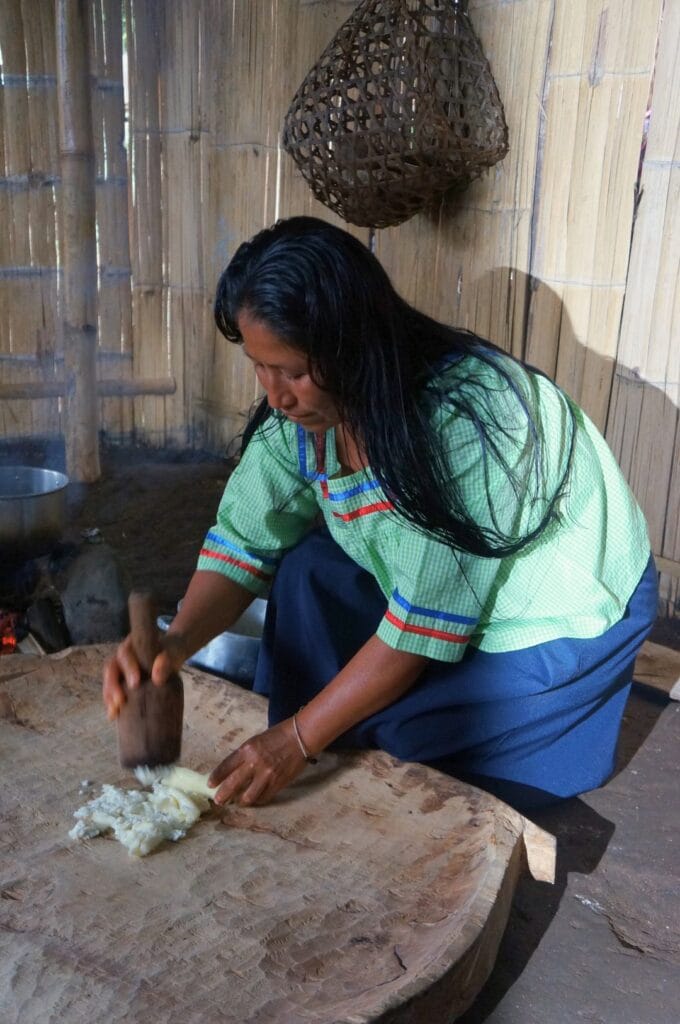
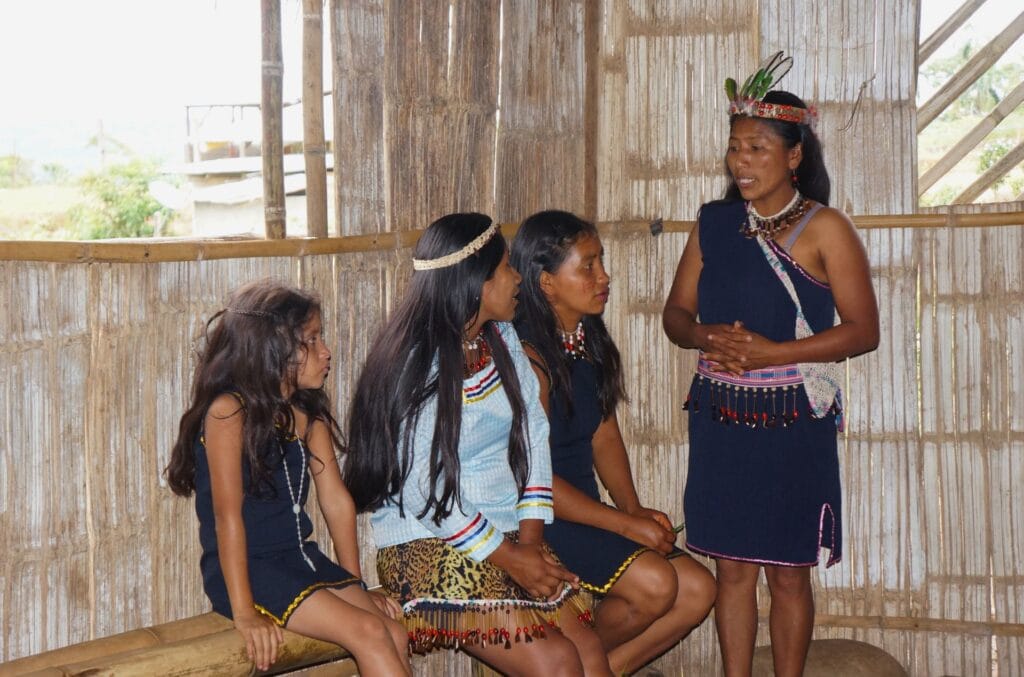
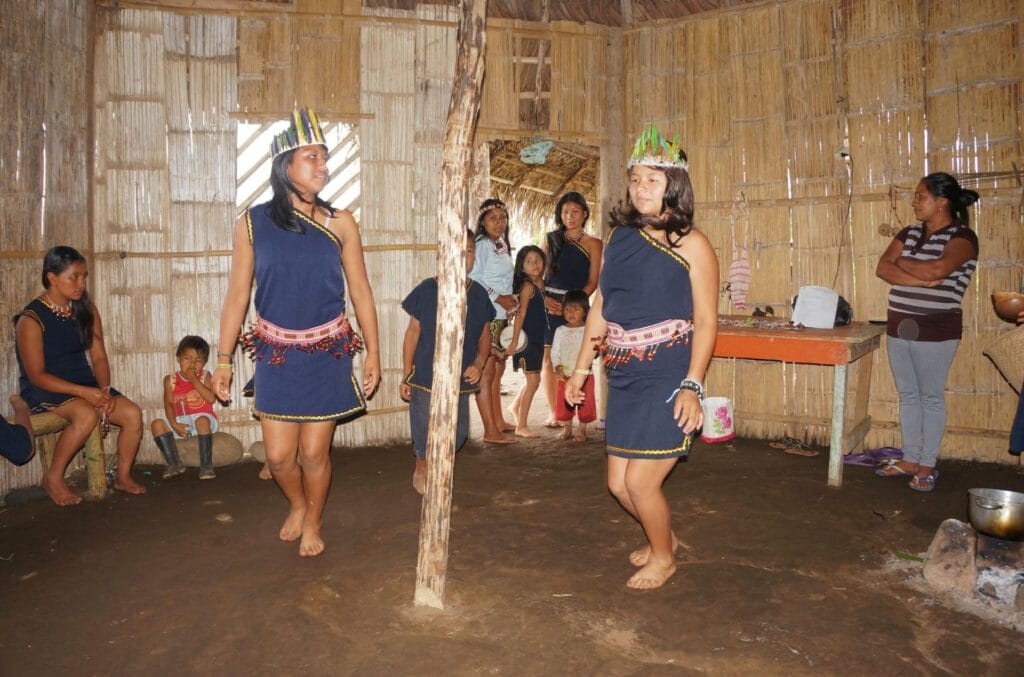
Only a few hundred meters from the lodge, you can also explore 2 magnificent waterfalls on your own! But once again, it’s better to wear rubber boots because the terrain is, how to say… a tad muddy! I promise every slip is pure joy for the skin!
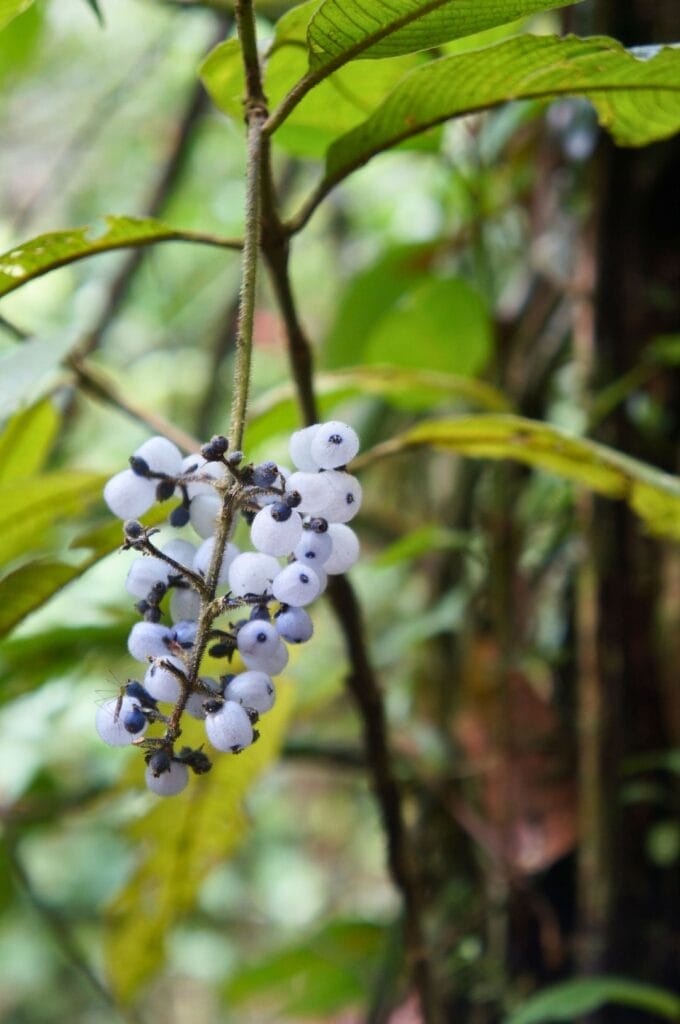
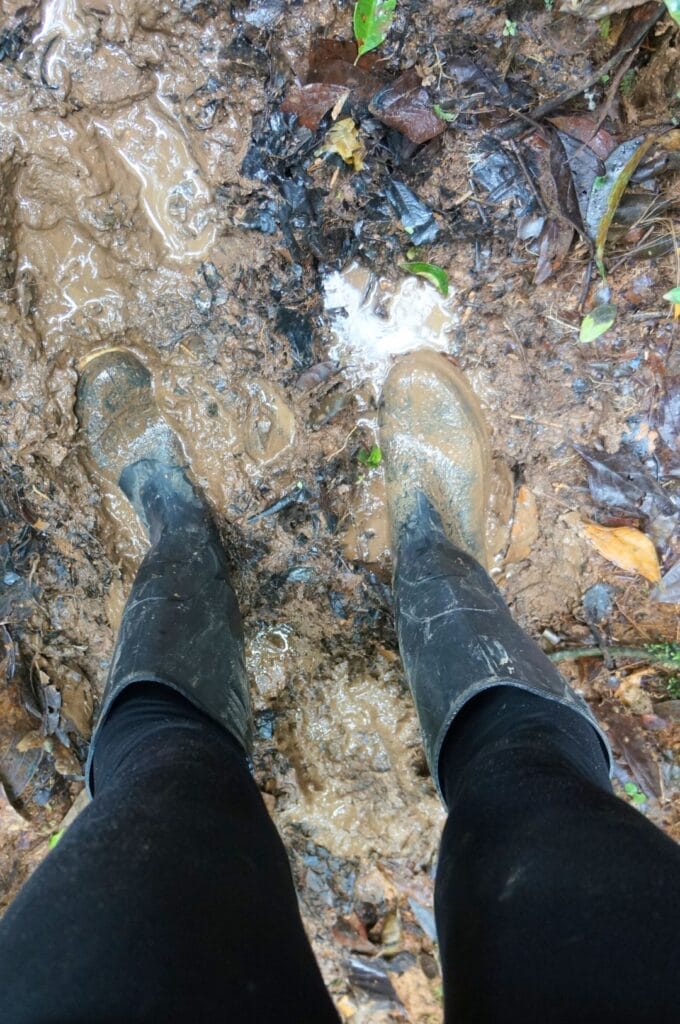
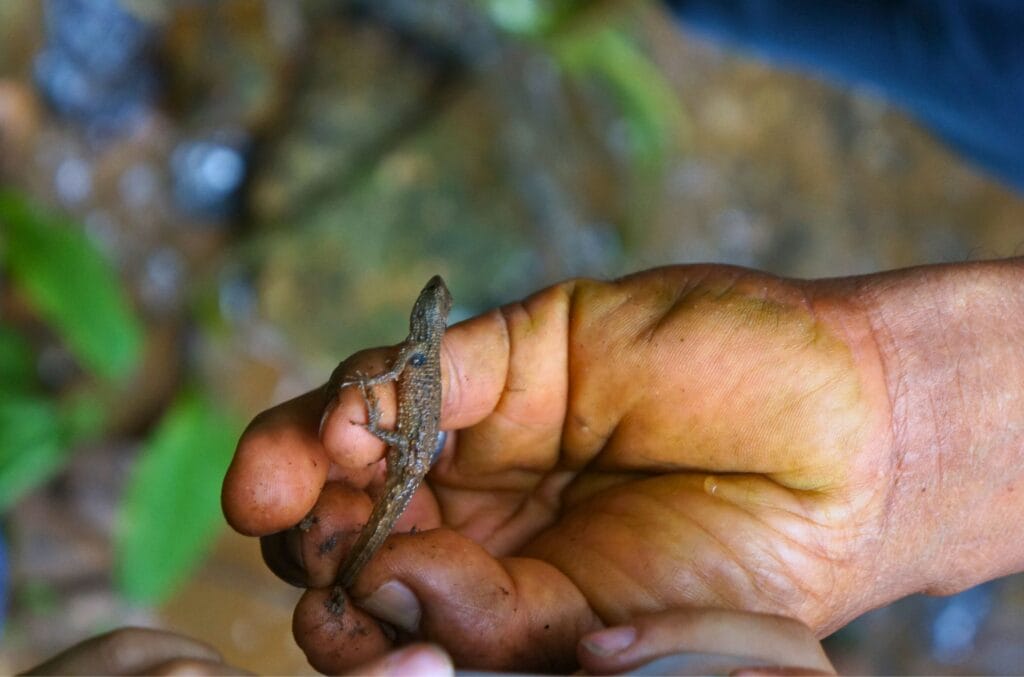
Jumandy Caves (cavernas de Jumandy)
At Huasquila Amazon Lodge, we met a friendly Ecuadorian family who had come all the way from Quito. They were driving and offered to take us to the Jumandy Caves! It was a super cool experience! We ventured with a guide, guided only by the light of a headlamp, through a network of caves with a flowing river for nearly 3 km. Just a heads up, it gets wet!
We entered wearing swimsuits and walked in the water. Several times, we swam against the current, and most importantly, we avoided shining our headlamp on the walls! Okay, the last point is not part of the official recommendations; it’s my personal recommendation! Well, the cave is infested with spiders, scorpions, and other unidentified delights. Anyway, I preferred to light up my feet without turning my head too much!
However, we’re sorry, but we didn’t bring back photos of cavernas de Jumandy. Our camera probably wouldn’t have appreciated the swim if we had taken it. You’ll have to use your imagination to see us in swimsuits and rubber boots! Promise, the bikini-boots combo is the new fashion trend for the next season!
Jumandy Caves are open to the public every day of the week from 8 am to 4 pm. The entrance fee is $5.5 each if you’re a group of 4 or more and $20 for a group of 3 people or fewer. Tip: form a group with other travelers to pay less! The price includes the guide and the headlamp. The visit lasts about 1 hour. To access cavernas de Jumandy, you can take a taxi from Tena ($10 per ride) or hitchhike.
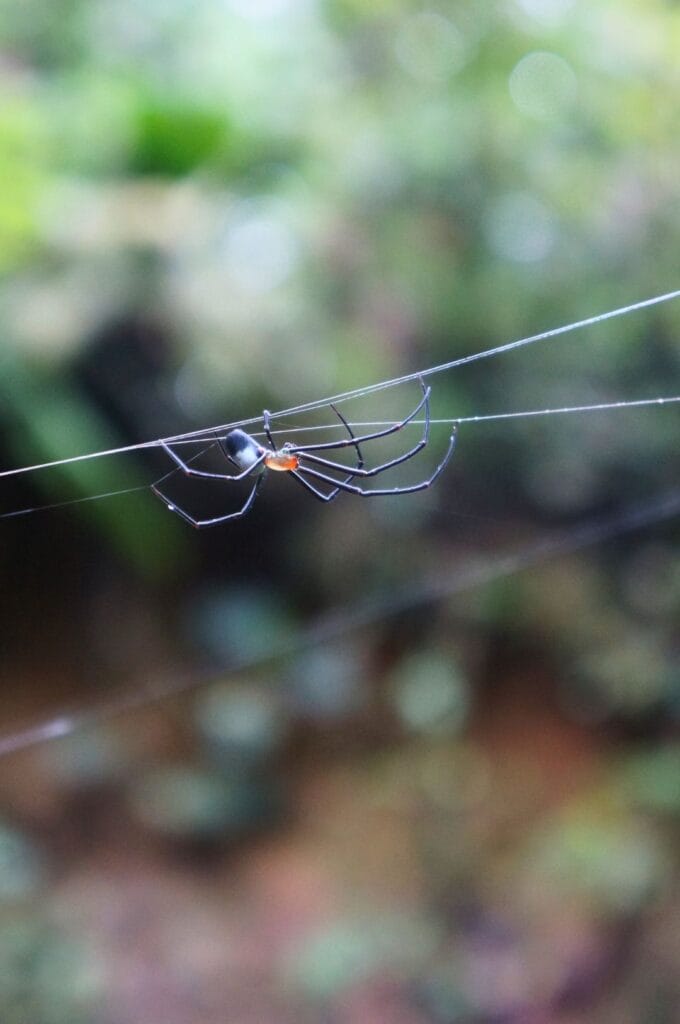
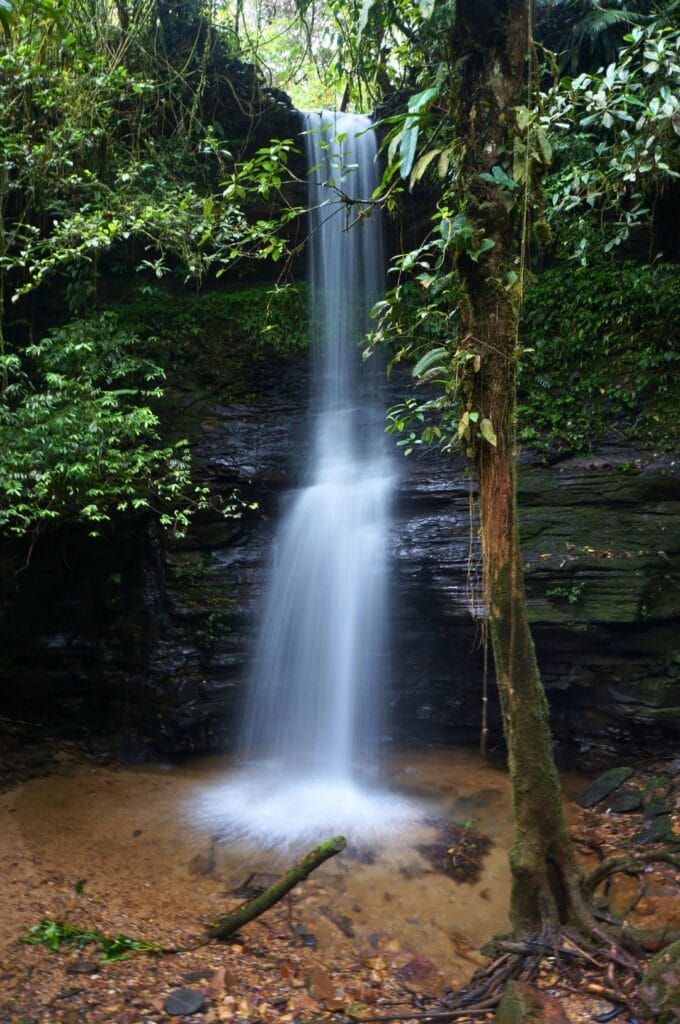
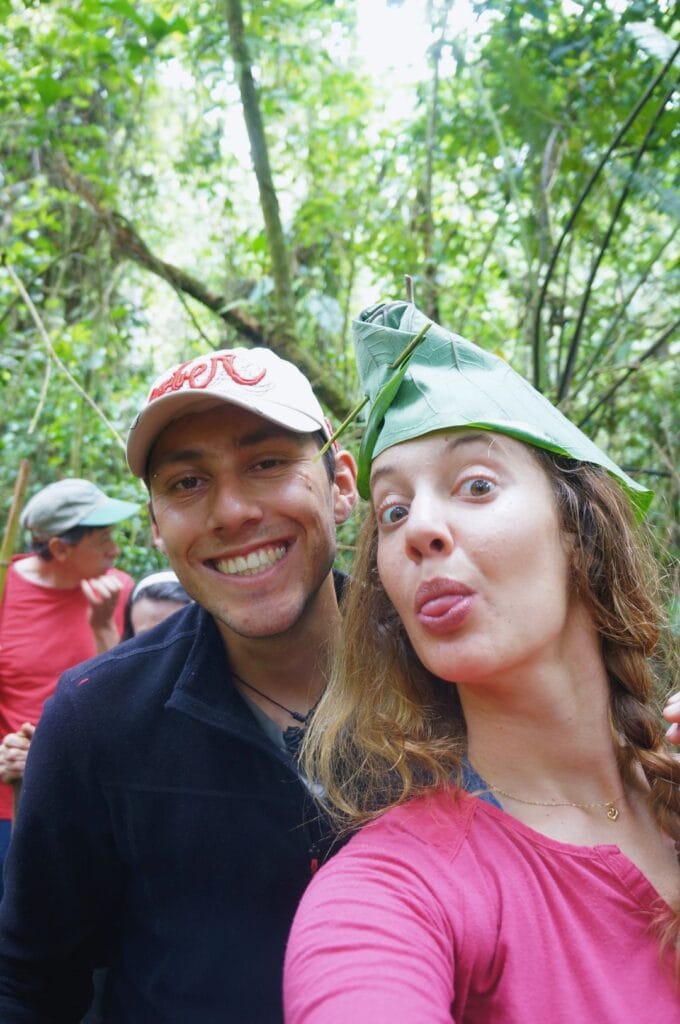
Review of our visit to the Amazon
We loved this stay in the Amazon rainforest! Going further south was a choice to avoid mosquitoes, among other things, but there’s no doubt that other parts of the Amazon must be worth exploring too! Are you ready to face the jungle?
After this Tarzan-worthy interlude, we’ll meet you for our ultimate article on this Ecuador trip: the review and budget! Otherwise, see you in Peru! 😉
Pin it
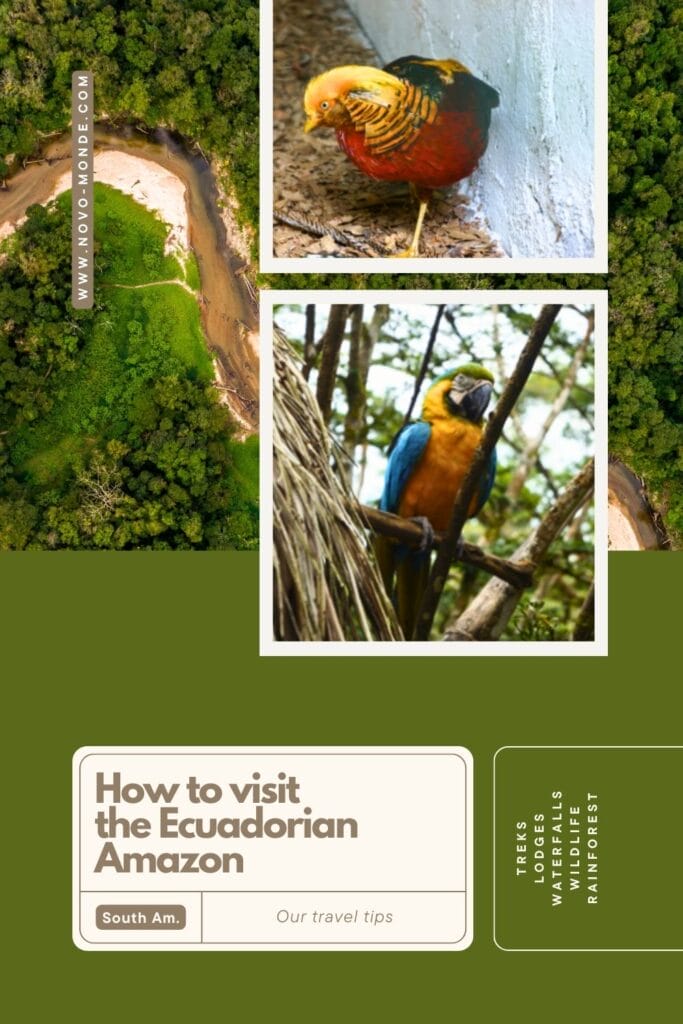
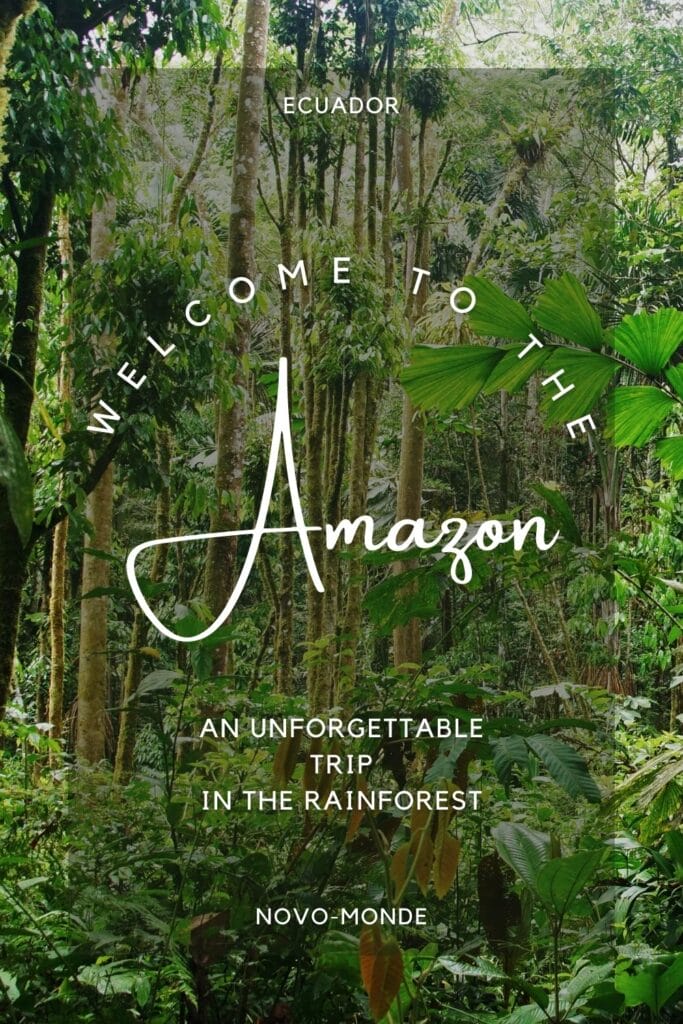
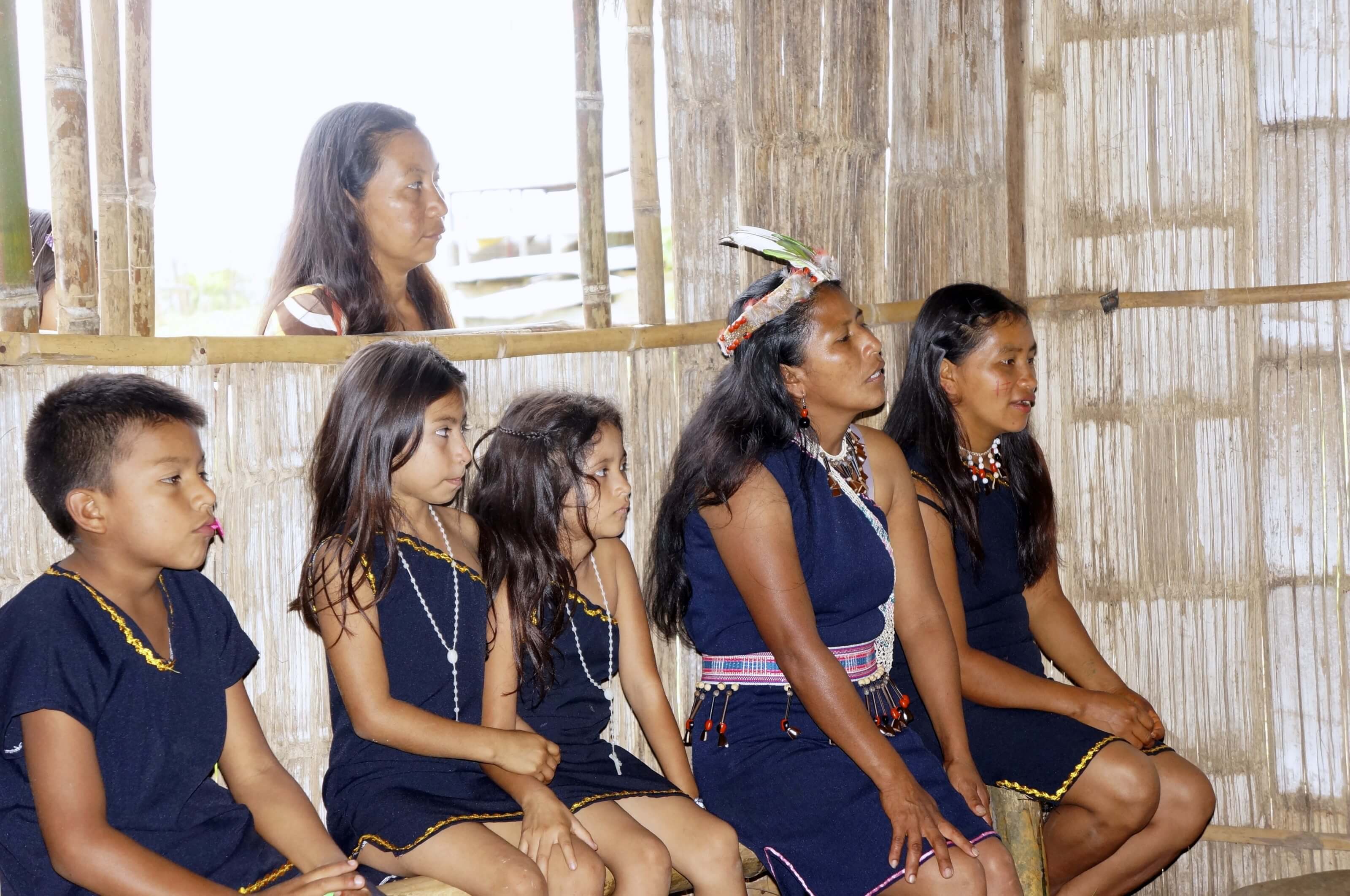
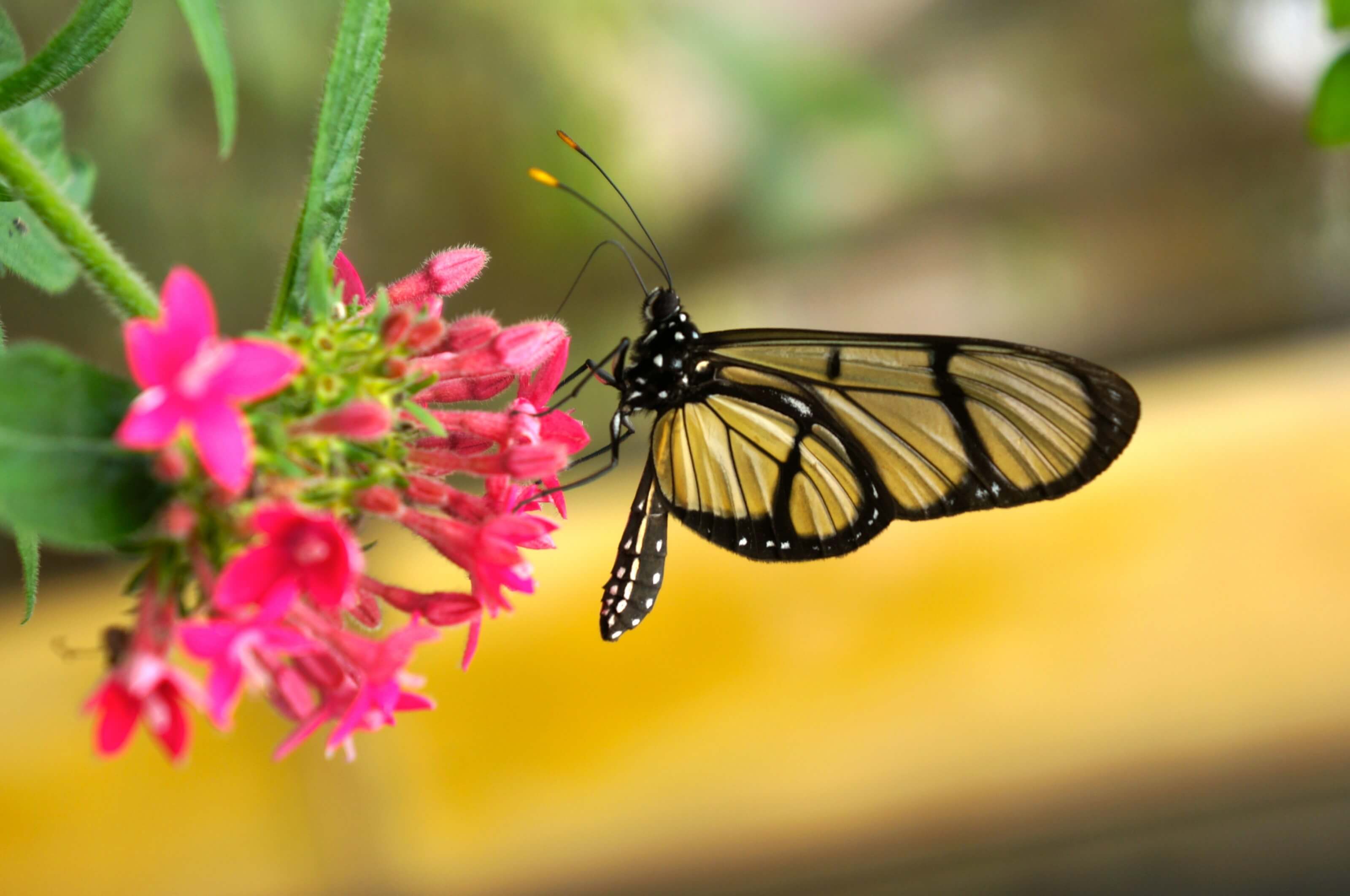
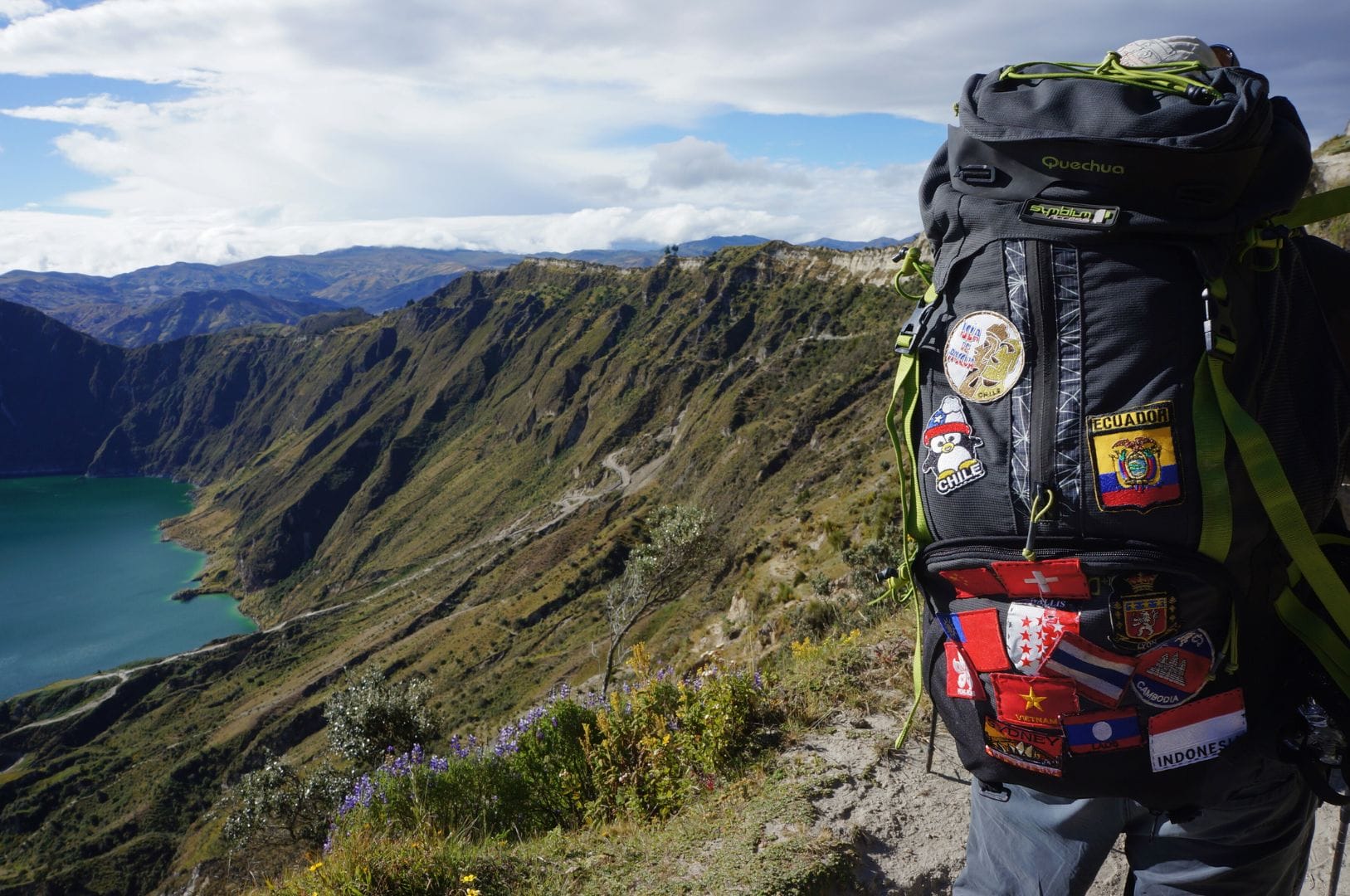
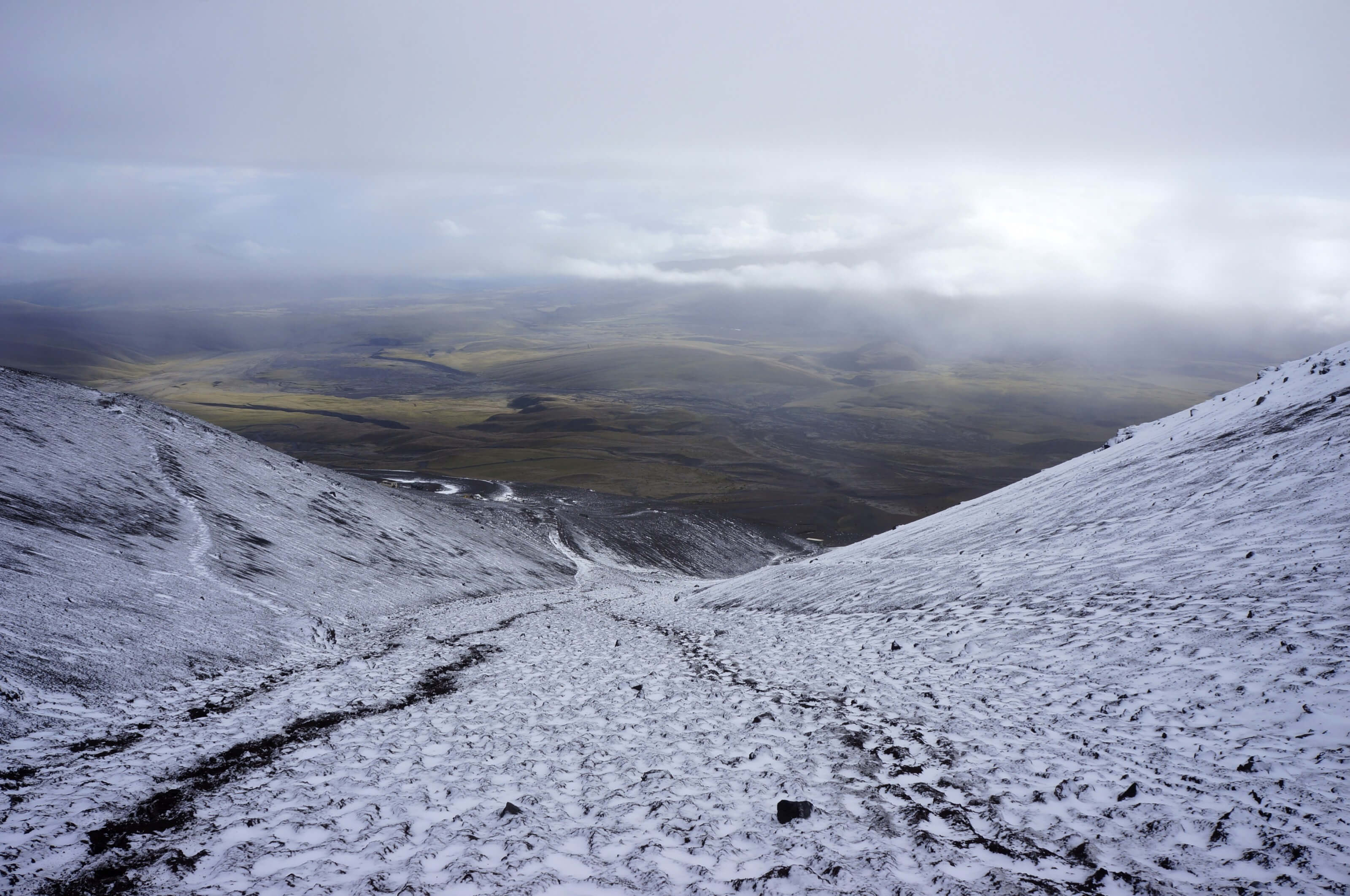
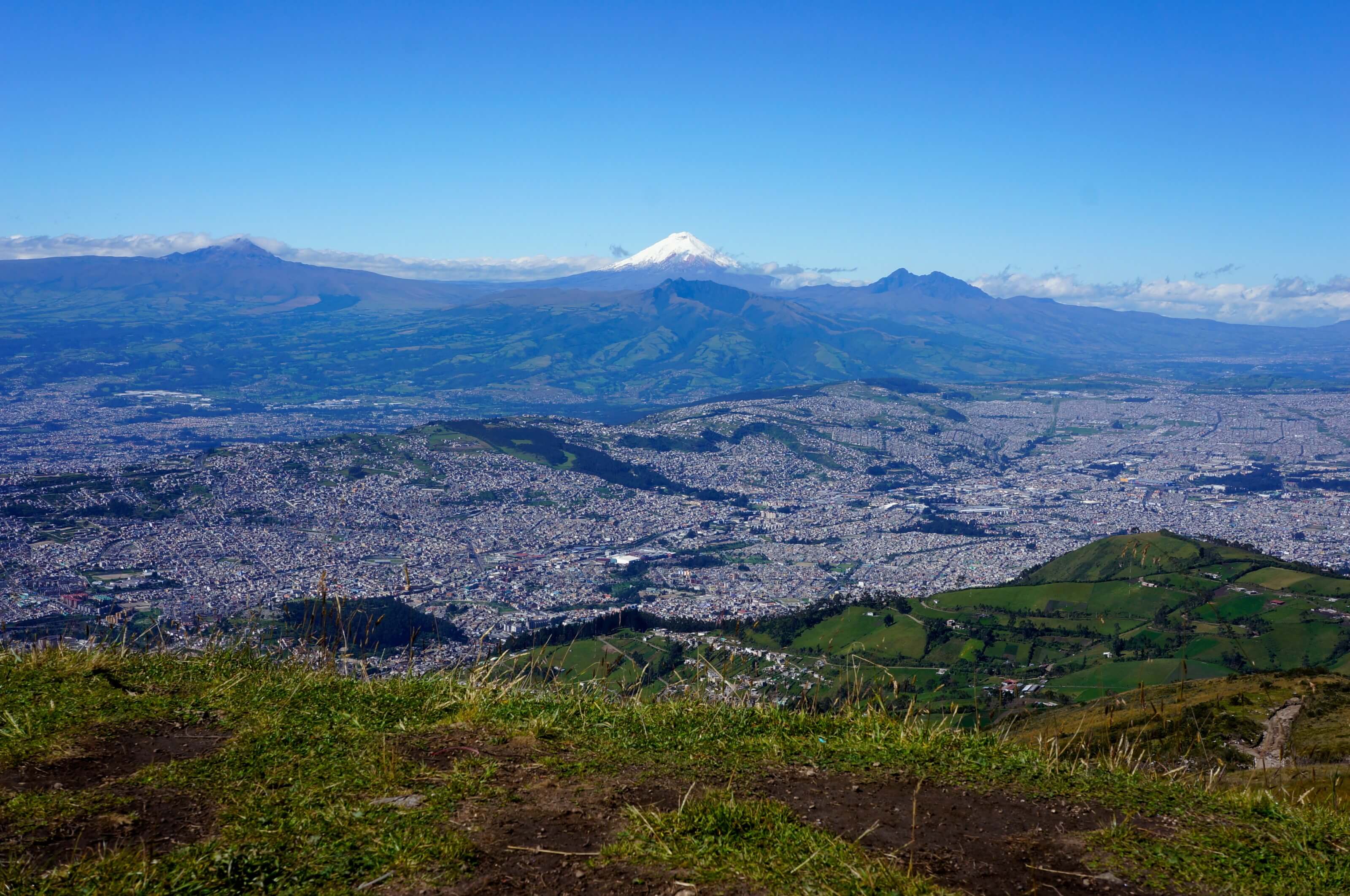
Join the discussion